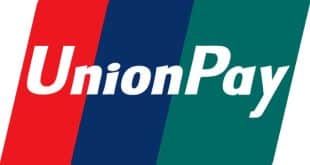Leading payment card network Visa Inc. on Tuesday announced three initiatives to spur adoption of so-called EMV contact and contactless chip cards and near-field communication (NFC) mobile payments in the U.S. Observers hailed Visa’s action, but noted that a full move to EMV and NFC mobile payments in the U.S. is still years away.
Visa’s announcement raised plenty of questions, especially about cost. The initiatives are aimed at the point of sale and not directly at the booming field of card-not-present payments, and Eduardo Perez, Visa’s head global payments system risk, tells Digital Transactions News that they don’t necessarily mean the U.S. will have the chip-and-PIN model of EMV payments common in other countries. Still, Aug. 9, 2011, is the most important date yet for the so-called Eurocard-MasterCard-Visa chip card system in the U.S., the only major country that has yet to commit to the technology that is supplanting magnetic-stripe cards. EMV cards effectively thwart card counterfeiting, and they’ll eliminate the increasing problem of U.S. cardholders being unable to use mag-stripe cards in EMV countries.
“By encouraging investments in EMV contact and contactless chip technology, we will speed up the adoption of mobile payments as well as improve international interoperability and security,” Jim McCarthy, Visa’s global head of product, said in a statement.
The three initiatives are:
–Expansion to the U.S. of the Technology Innovation Program (TIP) that Visa announced in February for international merchants. Under TIP, Visa eliminates the requirement that merchants annually validate their compliance with the Payment Card Industry data-security standard (PCI) provided that 75% of their Visa transactions originate at chip-enabled terminals. To qualify for TIP, which takes effect in the U.S. Oct. 1, 2012, POS terminals must be enabled to accept contact and contactless chip cards as well as NFC contactless payments from mobile devices. Merchants still are expected to meet PCI’s rules.
–U.S. merchant acquirers and sub-processors must be able to support chip transactions no later than April 1, 2013. Acquirers must be able to transmit and process the additional data in chip transactions, including the cryptographic message that makes each transaction unique. This so-called “dynamic authentication” is EMV’s main security advantage over the mag stripe, which relies on static authentication such as signatures and PINs for authorizations.
–A liability shift for domestic and cross-border counterfeit POS transactions effective Oct. 15, 2015. Visa says card issuers today largely absorb the costs of counterfeit fraud, but with the liability shift, if the customer presents a contact chip card to a merchant, that at a minimum, has not installed contact chip card terminals, liability if the transaction proved fraudulent could shift to the merchant’s acquirer. Acquirers will pass the cost to their merchants.
Gasoline retailers have until Oct. 1, 2017, before they’re subject to the liability shift. “We know that the automated fuel dispenser merchants have a difficult time because their terminals are integrated into the pump,” Perez says.
While dramatic, Visa’s initiatives will need a lot of help from other payments companies, including Visa’s rivals, before they bear fruit. Merchants have protested the expense of meeting PCI’s manifold dictates and annual audits, so Visa’s TIP would seem to be a strong incentive. But in addition to Visa, merchants must validate PCI compliance with MasterCard Inc., American Express Co., Discover Financial Services, and Japan-based JCB. If the others, especially No. 2 MasterCard and No. 3 AmEx (Visa, MasterCard, and AmEx command more than 90% of the U.S. credit card market) don’t offer something similar, Visa’s incentive is largely meaningless, says Gartner Inc. vice president and technology analyst Avivah Litan.
“Even if you’re off the hook for validation for Visa, you’re still required to report to MasterCard,” she says.
But Steve Elefant, chief information officer for merchant acquirer Heartland Payment Systems Inc., thinks the incentive will work. He notes that Visa’s card-security rules are the foundation of PCI. “They tend to drive a lot of things that happen in the industry,” says Elefant. “It remains to be seen on the PCI side, but I do believe that EMV will be coming to the U.S. and will be supported by all of the major brands.”
Asked if MasterCard is planning anything similar to TIP, a spokesperson said by e-mail that, “We are helping our customers understand what the implications of EMV and other technologies in the U.S. would be. Obviously, Visa’s decision will impact market direction and we will continue to consider our actions accordingly.”
In February, Visa said it kept TIP out of the U.S. because of the uncertainty surrounding the Federal Reserve’s pending rules to implement the debit card interchange price controls and network-routing provisions in the Durbin Amendment to 2010’s Dodd-Frank Act. The Fed came out with its final rules in late June. “Yes, we’ve gotten some clarity on the Fed rules as it relates to the Durbin Amendment,” Perez says. “We wanted to wait; now that they have [come out] we feel we are in a position to move forward.” Perez says he doesn’t have numbers about how many foreign merchants have signed on to TIP, saying Visa is still receiving applications. “There’s a good amount of interest,” he says.
Only about 150,000 payment terminals in the U.S. accept contactless cards, and one estimate put the cost of a full U.S. EMV conversion in the billions. Visa estimates that the incremental cost for adding EMV chip card capabilities to a new terminal is about $30.
Heartland’s Elefant says the cost would be under $100, but adds that EMV won’t banish card fraud because data are still transmitted in the clear. Merchants will still need terminals that encrypt or tokenize card data, such as Heartland’s E3, he says. “This is a seven- to 10-year rollout,” he says. “We don’t ever expect mag-stripe cards to go away.” Further, few mobile phones have NFC capabilities today, though experts believe the number will boom in coming years.
Gartner’s Litan says that while a move to EMV is “overdue” and NFC mobile payments are good things, the cost burden is likely to fall most heavily on merchants. This comes while Visa competes with Google Inc. and other recent entrants as mobile payments begin their anticipated rise. “This is all about Visa getting NFC at the expense of merchants,” Litan says.




